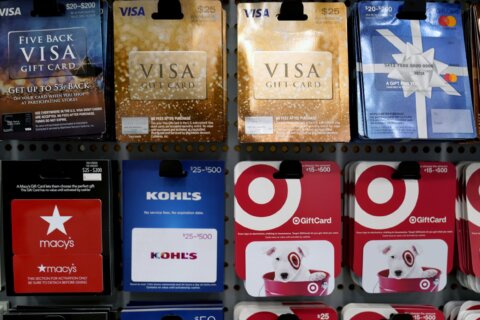Your credit report is probably on the bottom of your list of must-reads, but there’s a good chance that some of the information in your credit report is wrong. There’s also a good chance you can fix those errors and improve your credit score.
A 2012 Federal Trade Commission study found that one in four consumers saw errors on their credit reports that could impact their credit scores. One in five consumers had an error on one of their three credit reports that was corrected after disputing it, and four out of five consumers who disputed an error had their credit report modified. About 20 percent of consumers who identified errors on their credit reports experienced an increase in their credit score that resulted in a decrease in their credit risk tier.
Credit report errors are common, but they can be fixed. Don’t wait to identify and correct errors on your credit reports.
The Impact of Errors on Your Credit Reports
Although some errors, such as a misspelled name or wrong address, can be fairly innocuous, others, such as fraudulent accounts or inaccurate account information, can be more serious. Serious errors can make it difficult to get credit, get a job, rent an apartment or open a utility account.
Trouble Getting Credit
“Mistakes on your credit report could lead to a lower credit score than you actually deserve,” says Roger Cowen, founder and president of Cowen Tax Advisory Group in Hartford, Connecticut. “A lower score could make it harder for you to get approved for a credit card, a mortgage or any other type of financing,” he explains.
[Read: Best Secured Credit Cards of 2017.]
If you’re approved for a loan or credit card with a lower credit score than you deserve, you can expect to pay a higher interest rate. Higher interest rates can cost you hundreds or thousands of dollars over the life of a loan or the years you use a credit card.
Impact on Living Necessities
Your credit reports and scores affect more facets of your life than you might realize. “Credit profiles and credit scores can affect the ability to rent an apartment,” notes Kevin Gallegos, consumer finance expert and vice president of Phoenix operations for Freedom Financial Network.
He also points out many auto insurance companies will consider your credit score when determining rates. Finally, “telephone and other utility companies can use information in credit reports to decide whether to provide services,” he says.
Difficulty Getting a Job
Think you can keep your personal and professional life completely separate? Think again. Federal law allows employers to access modified credit reports belonging to potential employees and to consider that information when making hiring decisions. Gallegos says this is especially common for positions that require handling large amounts of money, or sensitive personal and financial information.
Common Credit Report Errors
There are a handful of common errors you should regularly check for on all three of your credit reports.
1. Inaccurate account information: It’s possible for accounts that don’t belong to you to show up on your report. For instance, you could have a similar name to another person’s and end up with mixed accounts. It’s also possible for loan or credit card payments to be accidentally applied to your account and end up on your credit report.
Details of an account you genuinely own can be wrong. Common errors include showing an open account that’s reported as closed, reporting an incorrect balance, or listing you as the owner of the account when you’re only an authorized user.
2. Incorrect personal details: Your credit reports list personal information including your name, current and former addresses, date of birth and Social Security number. It’s not unusual to find an error related to personally identifiable information.
Often, personal information errors are clerical mistakes, but you can’t assume this type of error is innocent. “An inaccurate address could be a mistake, or it could be an indicator that a thief has added themselves to a pre-existing account of yours,” says Eva Velasquez, CEO and president of the Identity Theft Resource Center, a nationwide nonprofit organization providing free identity theft assistance.
Velasquez encourages consumers to contact their creditors about errors in personal information and find out whether new information has been added to their accounts recently.
3. Fraudulent accounts: Identity theft is a fear for many consumers, and that fear isn’t unfounded. A record 15.4 million Americans were victims of identity theft in 2016, according to Javelin Strategy & Research, equating to $16 billion in stolen funds.
“If an identity thief uses someone’s information to open a new credit card account [in the consumer’s name], then doesn’t pay the bill, the delinquent account appears on the consumer’s credit report,” says Gallegos.
[Read: Best No Annual Fee Credit Cards.]
Fraudulent accounts can negatively impact your credit and make life difficult as you clean up the mess left behind by identity thieves. The sooner you identify fraudulent activity on your credit reports, the better your chances of stopping it before it becomes a more difficult situation.
Credit Report Review Checklist
Keeping a close eye on your credit reports is the best way to find and fix errors. You can monitor your credit reports by requesting a free credit report from each of the three bureaus (Equifax, Experian and TransUnion) once a year. You can get your free credit reports from AnnualCreditReport.com, the only official site for getting free credit reports from all three credit bureaus. Don’t be fooled into paying for what you are entitled to receive for free under the Fair Credit Reporting Act.
To keep tabs on your credit throughout the year, it’s helpful to request one of your reports every three to four months rather than pulling all three at the same time.
Gallegos recommends reviewing these important sections when checking your credit reports for accuracy:
— Identifying information: The first section of a credit report contains identifying information including your name, current and former addresses, date of birth and Social Security number. “Most reports also have a section for ‘aliases,’ or other names, such as names with or without a middle initial and maiden names,” says Gallegos. Review this information carefully to be sure you aren’t being held responsible for debt that isn’t yours.
— Creditor information: The creditor information section lists all your credit accounts, as well as details about the lender, your balance and status information. Comb through the details of each account to ensure each one belongs to you and is accurate. “This will likely be the longest section,” notes Gallegos.
— Collection accounts: This section lists any accounts that have been sent to collections. If you see anything questionable here, such as an account you don’t believe is yours, Gallegos recommends requesting that the collection agency send you and the credit bureau a letter verifying that information. Under the Fair Debt Collection Practices Act, you’re entitled to a response within five days.
— Public records: Here, you will find information related to public financial records, such as bankruptcy judgments, liens and overdue child support. Some entries can remain on your reports for seven years or more.
— Inquiry section: Finally, this section will indicate which organizations have recently requested a pull of your credit information. “If you see unfamiliar names, contact them to find out why they were reviewing your credit,” says Gallegos. Ask the credit reporting agency for contact information if you need help getting in touch with any organizations that have requested your credit information.
How to Dispute Credit Report Errors (and Get Them Removed)
If you find an error, don’t panic. “The federal Fair Credit Reporting Act requires credit bureaus to provide a procedure for consumers to dispute inaccurate listings,” says Gallegos. “The best way to do so is by following the guidelines provided by each of the three credit reporting agencies on their websites.”
As long as you follow each credit bureau’s dispute process, you should be able to have incorrect information wiped from your records. However, it can take time. These are the steps you should take to dispute and remove credit report errors.
Step 1: Make sure it’s a legitimate error. Incorrect information should be disputed, as long as it’s a real error that impacts you. Credit bureaus will not respond if they deem the dispute frivolous, such as a blanket dispute of your entire report, or if you’re repeatedly disputing the same item without providing any new information.
Similarly, credit bureaus are not likely to remove negative information you dispute if it’s accurate. Only initiate the dispute process if the information you’re disputing is, in fact, false.
Step 2: Send a letter to the bureau that reported an error. Start by sending a letter to the bureau via certified mail with return receipt requested. Donald Petersen, an Orlando, Florida-based consumer protection lawyer, recommends listing each error as “‘My credit report says X; it should say Y.’ Then, explain why, ever so briefly.” The FTC offers a sample letter you can use as a template. Additionally, it can be helpful to enclose a copy of your report with the items in question circled. Be sure to keep copies of all correspondence.
Petersen says it’s crucial to keep all communications in writing. He explains that disputing errors over the phone means “the consumer will not have a copy of the dispute for counsel to evaluate, and the credit reporting agencies will withhold it during the litigation, which just delays resolution of the consumer’s case.” If you dispute credit report errors online, be sure to print all your records.
Step 3: Remain patient. Credit bureaus are required by law to respond to your dispute. Unfortunately, they’re not required to do it quickly.
You’ll likely have to wait up to 30 days for the initial response and then several more weeks as the investigation takes place. Cowen says, “Errors can take a lot of diligence and energy on your part to get corrected. Be prepared to wait up to 60 days for a correction.”
Step 4: Determine whether the resolution is adequate. After you receive a resolution to your error, make sure the error has been corrected.
[Read: The Best Business Credit Cards of 2017.]
If you’re not satisfied with the results of your dispute, there are a few courses of action you can take:
— Redispute the error: According to Petersen, if you don’t agree with the credit reporting agency’s decision and you have concrete evidence that the results of the investigation are inaccurate, you can send your evidence to the agency within 15 days, with a letter stating what you’re enclosing and what those documents mean. Ask the agency to send you the materials it used to come up with its decision and escalate the dispute if needed.
— Report the credit reporting agency: If you believe the credit reporting agency is not providing adequate assistance or taking your dispute seriously, you can file a complaint with the FTC.
— Go directly to your creditor: Rather than requesting that the credit reporting agency remove the erroneous information, you can ask the creditor or collector for that account to update its records instead. Nolo.com offers a template you can use.
— Compose a statement of dispute: You can write a 100-word statement of dispute to be included in your credit reports. This statement is a chance to offer your side of the story when creditors review your reports, though there’s no guarantee they’ll consider it.
Step 5: Repeat. You have more than one credit report. Each of the three major credit reporting agencies compiles its own reports based on your credit activity. Rarely do all three credit reports match up exactly.
That means you could have an error on one report, while the others remain accurate. Or, after you correct an error with one agency, the error may remain on your other reports. Although credit bureaus should inform the other agencies about corrected errors so they can update their records, it’s best to check your reports to make sure it’s done. If the error remains, repeat the dispute process with the other agencies.
Step 6: Follow up. Just because the error has been corrected doesn’t mean your work is over. A 2015 FTC study found that, of the consumers who had at least one unresolved dispute in the 2012 FTC study, about 70 percent believed some of the information was still incorrect a year later.
“Continue to check your credit report to make sure the credit reporting agency did not reinsert the disputed information,” says Petersen. “It happens all the time.”
Dealing with credit reports might seem like a hassle, but you can’t afford to keep your head in the sand. Your credit profile affects too many areas of your life to ignore it. If you’re proactive about reviewing your credit reports, you can catch errors and fraudulent activity before they turn ugly.
More from U.S. News
Closing a Credit Card the Right Way
How to Get a Credit Card Without a Social Security Number
Everything You Need to Know About Finding and Fixing Credit Report Errors originally appeared on usnews.com







